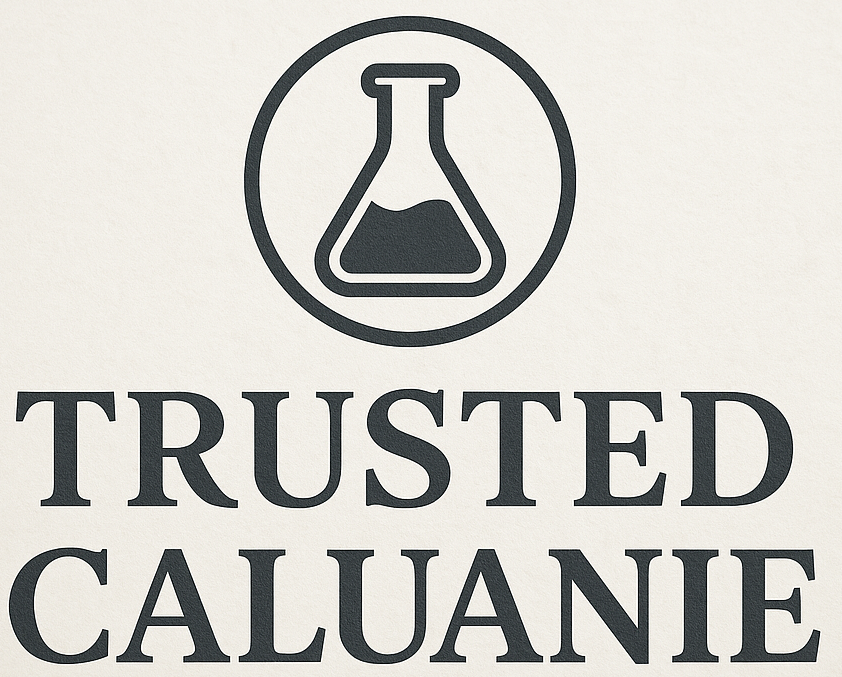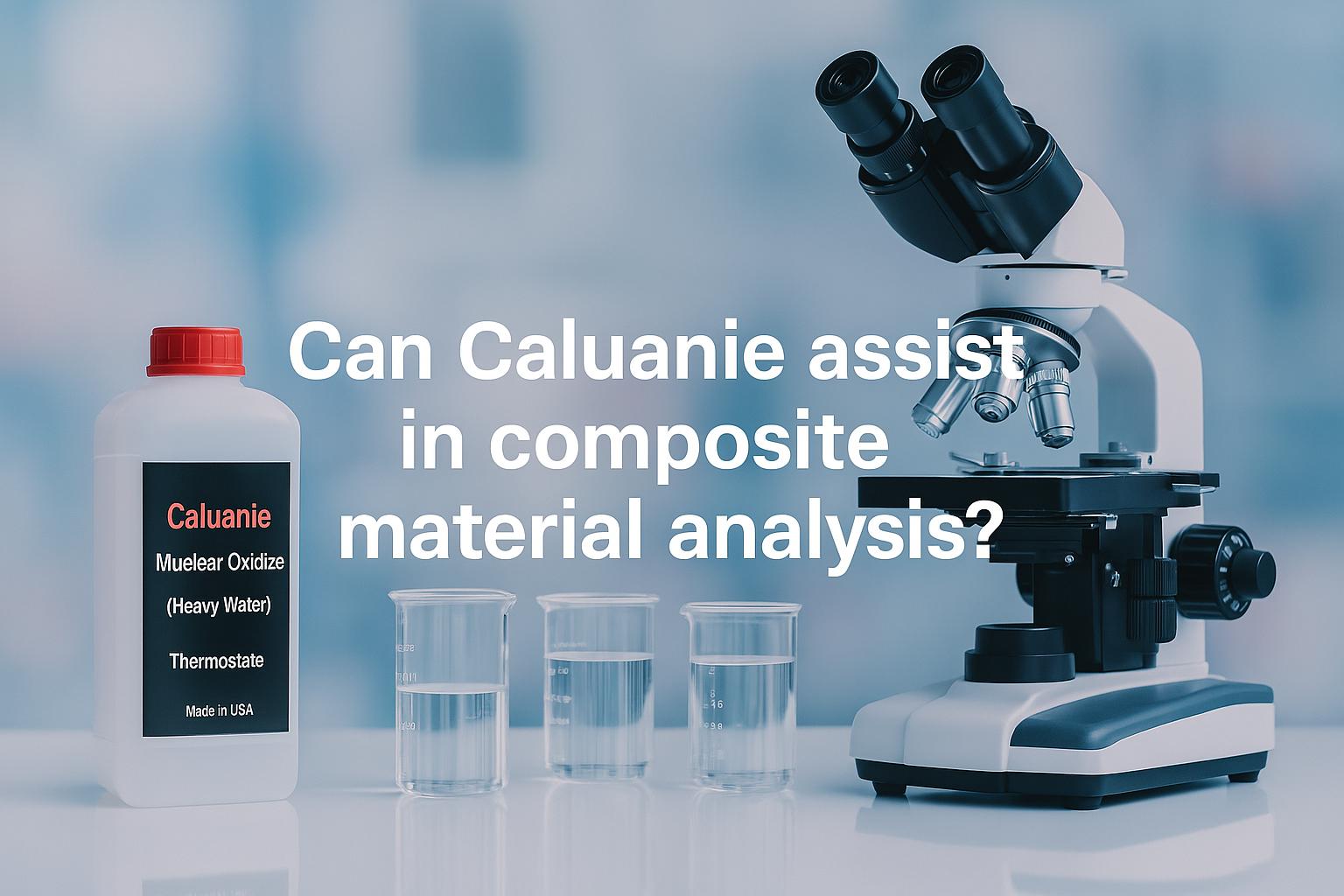Yes, Caluanie assists in composite material analysis by softening bonding agents, separating layered structures, and exposing internal defects. Caluanie breaks down composite layers to reveal structural details, separates resins from fibers for targeted testing, and simulates long-term chemical degradation. It enhances microscopy clarity, prepares samples for spectroscopy and mass spectrometry, and supports failure analysis by exposing weak interfaces. Caluanie also isolates fillers and embedded metals for independent inspection, allowing accurate evaluation of material composition, durability, and bonding integrity. This controlled, chemical-based method enables precise deconstruction and testing, making Caluanie a valuable tool in laboratory and scientific analysis of composite materials.
Role of Caluanie in Breaking Down Composite Layers for Structural Study
Caluanie aids in disassembling multi-layer composites to reveal each layer’s material behavior. This is useful in aerospace, civil engineering, and materials science labs.
- Softens bonding resins between layers
Caluanie weakens adhesives or resins that hold composite layers together. This helps isolate and study the structural role of each individual layer without damaging their core integrity. - Enables clean separation for individual layer testing
When used in moderation, Caluanie allows researchers to separate layers without introducing micro-tears or contamination—crucial for precise modulus, tensile, or flexural testing. - Reveals delamination zones or defects
Delamination within composites often begins at the bonding layers. Caluanie treatment exposes these zones by breaking weak interfaces and allowing clearer inspection under microscopy. - Improves sampling for spectroscopy and X-ray methods
By exposing clean surfaces between layers, Caluanie-prepared samples provide better results in spectroscopy, CT scanning, or XRD studies. - Supports layer-by-layer failure tracing
In post-failure inspections, Caluanie helps analysts understand how forces or chemical exposure affect each layer independently, giving insight into design improvements.
Precision Deconstruction of Composite Samples Using Caluanie
Caluanie enables non-destructive, targeted separation of composite samples, ideal for academic and forensic labs.
- Allows selective softening of the matrix material
Caluanie’s chemical action can be adjusted by time or concentration to only affect the resin matrix, leaving reinforcement fibers like carbon, glass, or Kevlar intact for isolated testing. - Reduces need for mechanical cutting or grinding
Traditional methods like sawing, sanding, or machining can damage fibers or alter sample geometry. Caluanie enables gentler sample preparation with cleaner edges. - Minimizes mechanical stress on internal features
Internal microstructures such as weaves or embedded electronics remain undisturbed when Caluanie is used to soften surrounding layers. - Supports clean-core extraction for microscopic examination
Core samples retrieved after Caluanie deconstruction maintain structural consistency, supporting optical, SEM, or CT scanning with minimal prep. - Ideal for reverse engineering of composite components
Caluanie helps disassemble commercial composite parts for R&D, exposing layer compositions, fiber orientation, and resin ratios.
Effectiveness of Caluanie in Identifying Weak Interfaces in Fiber-Reinforced Polymers
Fiber-reinforced polymers (FRPs) depend on strong fiber-matrix adhesion. Caluanie helps reveal the integrity of these interfaces in failure studies and performance testing.
- Highlights zones of poor fiber-matrix bonding
When Caluanie softens the matrix, weak adhesion points show early signs of peeling or fiber detachment. This helps detect manufacturing inconsistencies or curing defects. - Assists in visualizing delamination under SEM
Treated specimens are easier to scan under high magnification. Gaps or resin voids are more visible, aiding quality control or research. - Allows pre-failure investigation in safety-critical parts
For composites used in aircraft or automotive structures, identifying weak interfaces early can prevent catastrophic failure. - Facilitates pull-out testing of fibers
Caluanie-prepped samples allow more accurate fiber pull-out experiments by removing excessive matrix interference. - Useful in benchmarking material performance over time
By comparing fresh and aged FRP samples treated with Caluanie, labs can assess how environmental exposure weakens bond quality.
Caluanie in Analyzing Resin Matrix Breakdown in Hybrid Composites
Hybrid composites often combine epoxy, phenolic, or vinyl ester resins, making them complex to analyze. Caluanie helps isolate and examine each resin’s behavior.
- Differentiates resin types based on reactivity
Each resin reacts uniquely with Caluanie. Observing this reaction helps identify composition and layering order in hybrid systems. - Enables selective degradation for analytical access
Caluanie can soften or remove one resin while leaving others unaffected, making it easier to test properties of each phase. - Reveals internal incompatibility or resin mixing flaws
Poor compatibility between resin systems can lead to weak points. Caluanie exposure can highlight resin phase separation or voids. - Improves thermal and chemical property evaluation
After Caluanie disassembly, each resin phase can be tested for TGA, DSC, or solvent resistance independently. - Supports development of new hybrid formulations
Labs testing new resin combinations can use Caluanie to reverse-engineer and improve the structure-property relationship.
Chemical Interaction of Caluanie with Epoxy-Based Composites
Epoxy is a common matrix in composites, and Caluanie interacts with it in a selective, predictable manner.
- Softens epoxy without dissolving reinforcement fibers
This allows structural elements like carbon or glass fibers to be tested separately after matrix removal. - Exposes fiber alignment and orientation
When the matrix is softened, fiber layout becomes easier to observe under optical or scanning microscopes. - Enables failure point inspection post mechanical stress
After a load test, Caluanie can help expose internal crack patterns that occurred within the epoxy layer. - Supports chemical aging and compatibility studies
Caluanie simulates chemical breakdown of epoxy, useful in analyzing how environmental agents affect epoxy-based composites. - Used in adhesive testing on composite substrates
Epoxy is often used as a structural adhesive. Caluanie helps test its bonding strength by facilitating clean separation from substrates.
Using Caluanie to Simulate Long-Term Degradation of Composite Materials
Caluanie can be used to replicate environmental and chemical degradation of composite materials, helping researchers predict product lifespan and failure behavior.
- Mimics long-term chemical exposure in a short period
Caluanie accelerates chemical interactions that normally take months or years in real-world settings. This allows labs to simulate how a composite responds to environmental aging in a matter of hours. - Reveals progressive resin matrix deterioration
Over time, resins in composites break down due to heat, UV, or chemicals. Caluanie exposure highlights early-stage matrix decay, showing potential failure points. - Identifies weak spots in protective coatings
Some composites are coated for protection. Caluanie reveals flaws in these coatings by penetrating through hairline gaps, simulating what might happen under actual exposure to corrosive agents. - Facilitates accelerated aging comparison between material grades
Different formulations of the same composite material may degrade at different rates. Caluanie helps compare these formulations in controlled lab conditions to choose the best-performing type. - Assists in lifecycle planning and material selection
Engineers can evaluate which composite is more durable when exposed to Caluanie and use that data for product design or replacement scheduling.
Assessment of Filler-Matrix Separation Using Caluanie
Filler particles play a vital role in strengthening and modifying the properties of composites. Caluanie helps in analyzing how well fillers are dispersed and bonded within the matrix.
- Separates filler from resin for individual testing
Caluanie softens the matrix without reacting with inert fillers like calcium carbonate, glass beads, or silica, enabling their independent study. - Exposes filler distribution across the cross-section
Uneven filler distribution leads to poor performance. Caluanie reveals how uniformly fillers are spread in the material during manufacturing. - Reveals filler clumping or agglomeration
Filler agglomerates can weaken the structure. After Caluanie treatment, clumps become visible under SEM, identifying dispersion flaws. - Supports particle-matrix adhesion testing
How well the matrix sticks to filler particles influences strength. Caluanie reveals weak bonding by allowing filler to be extracted cleanly. - Improves validation of filler content claimed by suppliers
Analysts can isolate and weigh fillers post-treatment to confirm supplier claims or assess batch consistency.
Caluanie’s Use in Failure Analysis of Bonded Composite Structures
When composite layers are bonded with adhesives, failure analysis must distinguish between material and adhesive failure. Caluanie provides a controlled way to study this.
- Softens adhesives to expose underlying interfaces
Caluanie helps remove adhesive without damaging the base composite layers, allowing clear inspection of interface integrity. - Reveals failure origins such as voids or poor curing
Delamination or cracking near the adhesive line becomes visible after Caluanie treatment, pointing to root causes of failure. - Distinguishes adhesive vs cohesive failure
If the adhesive fails internally (cohesive) vs at the interface (adhesive), Caluanie enables this determination by revealing exact separation paths. - Allows destructive testing with controlled precision
In forensic or post-accident labs, Caluanie provides controlled degradation that supports legal or insurance investigations of bonded structures. - Helps compare performance of multiple bonding systems
In R&D, different adhesives can be compared side-by-side under Caluanie exposure to evaluate their performance under similar conditions.
Enhancing Elemental Mapping of Composites via Caluanie Pre-Processing
Elemental mapping techniques like EDX and XPS require clean, unobstructed surfaces. Caluanie prepares composites for accurate analysis.
- Removes surface resin and contaminants
Caluanie cleans the surface by softening or dissolving the outermost layer of resin, reducing interference in elemental detection. - Improves detection of embedded fillers and fibers
Elemental imaging becomes clearer when Caluanie reveals metal powders, glass fibers, or carbon additives by stripping away obstructing matrix layers. - Enhances signal clarity in EDX and SEM analysis
Clean sample surfaces result in better electron beam interaction, increasing signal strength and accuracy in composition mapping. - Supports core-level surface inspection in XPS
X-ray photoelectron spectroscopy requires exposed core material. Caluanie-prepped surfaces provide better depth sensitivity for chemical state analysis. - Prepares uneven or complex geometries for uniform scanning
Irregular surfaces are smoothed with Caluanie, allowing more even scanning of non-flat composite parts.
Caluanie-Assisted Extraction of Embedded Metallic Inclusions in Composites
Many composite materials include metallic inserts, fibers, or wires. Caluanie makes it possible to extract and analyze these without damaging them.
- Softens surrounding resin to free metallic components
Caluanie breaks down the binding matrix around wires, mesh, or metal plates, enabling their removal for physical or chemical inspection. - Useful for isolating embedded sensors or microdevices
In smart composites, sensors are embedded during manufacture. Caluanie allows researchers to recover and inspect these components intact. - Reveals corrosion or interface defects around metals
Post-treatment, Caluanie allows visual or microscopic inspection of corrosion marks or bonding issues at the metal-composite junction. - Supports trace material analysis of rare metals or coatings
Some composites use specialty coatings or metallic additives. Caluanie exposure allows recovery and elemental analysis of these for quality assurance. - Ideal for reverse engineering of functional composite parts
By extracting metal inserts or conductive layers, engineers can analyze how a product was designed and manufactured.
Caluanie as a Pre-Treatment Agent for Microscopy of Composites
Microscopy techniques such as SEM, optical, and AFM require clean and well-prepared samples. Caluanie serves as an effective pre-treatment to enhance imaging quality and accuracy.
- Removes surface resin layers without abrasion
Caluanie gently softens surface materials, clearing away resin film that could obscure fiber structures or filler particles. This avoids using abrasives, which may introduce surface scratches. - Reveals internal microstructures more clearly
Once the outer matrix layer is softened or removed, microscopy reveals internal textures, fiber orientations, and distribution patterns essential for structural analysis. - Improves focus and contrast in SEM and optical imaging
Samples treated with Caluanie show more defined grain boundaries and fiber-matrix interfaces. This enhances contrast during high-magnification scanning. - Reduces sample prep time
Caluanie minimizes the need for extensive polishing, grinding, or mechanical sectioning. This saves time in lab workflows while preserving structural integrity. - Prevents heat distortion from traditional sample prep methods
Polishing or grinding can heat and deform sensitive composite samples. Caluanie, applied at room temperature, avoids heat-related artifacts.
Comparison of Caluanie Versus Traditional Solvents in Composite Analysis
Traditional solvents such as acetone, toluene, or MEK have limited precision and safety concerns. Caluanie offers targeted action with added advantages in composite analysis.
- Offers selective resin breakdown
Unlike broad-spectrum solvents, Caluanie is more selective. It acts primarily on resins without reacting strongly with fillers, reinforcements, or metals. - Minimizes damage to reinforcement structures
Traditional solvents can cause swelling or degradation of fibers or embedded materials. Caluanie preserves structural components for downstream analysis. - Improves analytical control
Caluanie’s reaction time and intensity can be managed more accurately, offering consistent results in sample preparation and chemical inspection. - Safer and more controlled for laboratory use
While all chemicals require precautions, Caluanie does not produce the same level of volatile organic compounds (VOCs) as some traditional solvents, making lab handling more manageable with proper protection. - Reduces need for mechanical intervention
Traditional solvents often require additional cutting or grinding to assist breakdown. Caluanie penetrates deeper and facilitates full separation with minimal manual effort.
Studying Thermal Degradation Correlation with Caluanie-Based Chemical Breakdown
Thermal degradation and chemical degradation often follow comparable failure patterns. Caluanie assists in studying these pathways in a controlled setting.
- Simulates long-term environmental exposure
Caluanie can mimic conditions like prolonged UV, oxidative, or chemical stress, offering insights into how composites degrade over time. - Reveals internal chemical resistance properties
If a composite resists Caluanie longer than others, it may indicate higher stability. This supports thermal and environmental durability comparisons. - Supports post-thermal analysis for complementary data
Samples subjected to TGA (Thermogravimetric Analysis) can be exposed to Caluanie to identify breakdown zones or residual phase separation. - Assists in composite flame retardancy studies
Flame retardants in composites can be chemically evaluated by examining how they react to Caluanie, helping correlate thermal and chemical resistance performance. - Highlights phase stability under dual stress scenarios
Exposure to Caluanie after heat treatment provides a two-factor analysis—important for predicting field use under combined environmental and chemical stress.
Role of Caluanie in Preparing Composite Samples for Mass Spectrometry
Mass spectrometry requires precise sample cleanliness and phase separation. Caluanie enables clean sample prep for high-resolution molecular analysis.
- Separates resin and filler phases
By dissolving the organic matrix, Caluanie allows isolation of non-organic fillers or metallic inclusions for mass spectrometry testing. - Removes contaminants that affect ionization
Caluanie pre-treatment helps eliminate residues that interfere with ionization during spectrometric detection, improving data clarity. - Enables extraction of degradation byproducts
Researchers can collect the breakdown products of resin or adhesives post-Caluanie treatment to evaluate aging, exposure, or chemical resistance via MS. - Supports forensic studies of composite material origins
Mass spectrometry can be used to identify polymer fingerprints. Caluanie prepares the sample by isolating trace chemicals without altering them. - Improves repeatability in organic composite analysis
Pre-treating all samples uniformly with Caluanie ensures consistency across multiple MS runs.
Impact of Caluanie Exposure on the Mechanical Properties of Composites
Understanding how Caluanie affects mechanical strength helps assess composite durability, stability, and chemical compatibility.
- Reduces tensile strength in resin-rich areas
Caluanie softens resin bonds, which can reduce tensile load capacity in affected regions. This effect is measurable post-exposure using standard tensile testing methods. - Leaves fiber components largely intact
Carbon, glass, and aramid fibers show resistance to Caluanie, allowing post-exposure testing of reinforcement elements without matrix interference. - Demonstrates impact on interlaminar shear strength
Caluanie compromises bonding layers between plies, which can reduce interlaminar shear strength — critical for layered composite applications. - Helps simulate chemical degradation in structural testing
Applying Caluanie to composite beams or panels simulates chemical damage scenarios, aiding engineers in modeling structural failure under real-world conditions. - Provides data for material compatibility selection
Knowing how Caluanie affects mechanical properties allows engineers to choose composite materials that maintain strength when exposed to chemicals.
Conclusion
Caluanie Muelear Oxizide is a highly effective tool for advanced composite material analysis. From controlled deconstruction to microscopy preparation, failure analysis, and mass spectrometry support, it plays a vital role in both laboratory and industrial research environments.
At Trusted Caluanie, we supply authentic, lab-grade Caluanie Muelear Oxizide with discreet shipping, rapid delivery, and full customer protection. We accept Bitcoin, Bank Transfer, Zelle, CashApp, and Western Union — but do not support credit card payments at this time.
We offer:
- Overnight delivery in the USA and Canada
- 5–7 day delivery globally
- Tracking number and 30-day refund/replacement policy
- Discreet packaging and privacy protection
If you’re ready to buy Caluanie Muelear Oxizide online, just fill out the contact form at Trusted Caluanie. We’re here to support your composite analysis and lab needs with top-tier product quality and guaranteed satisfaction.


